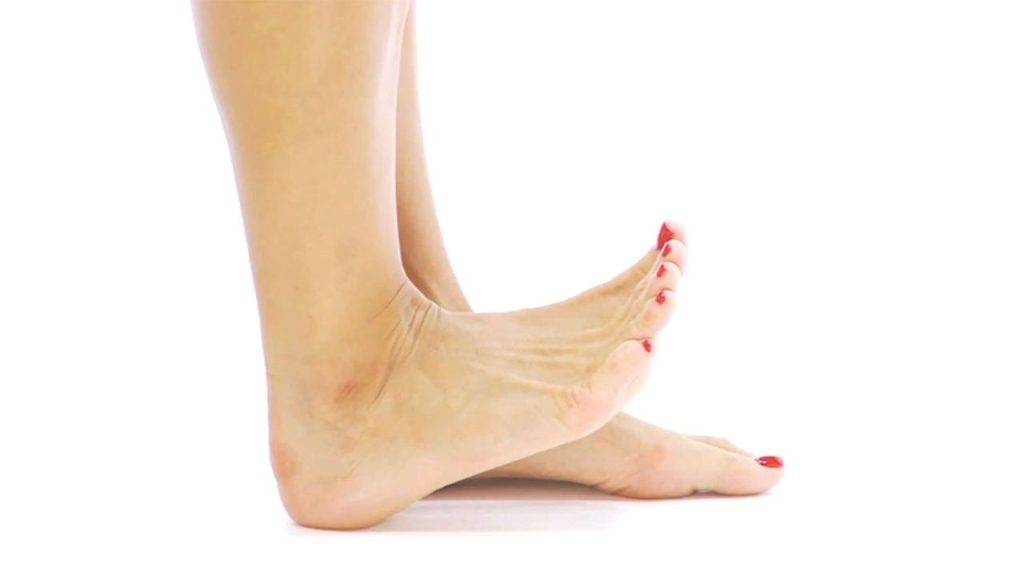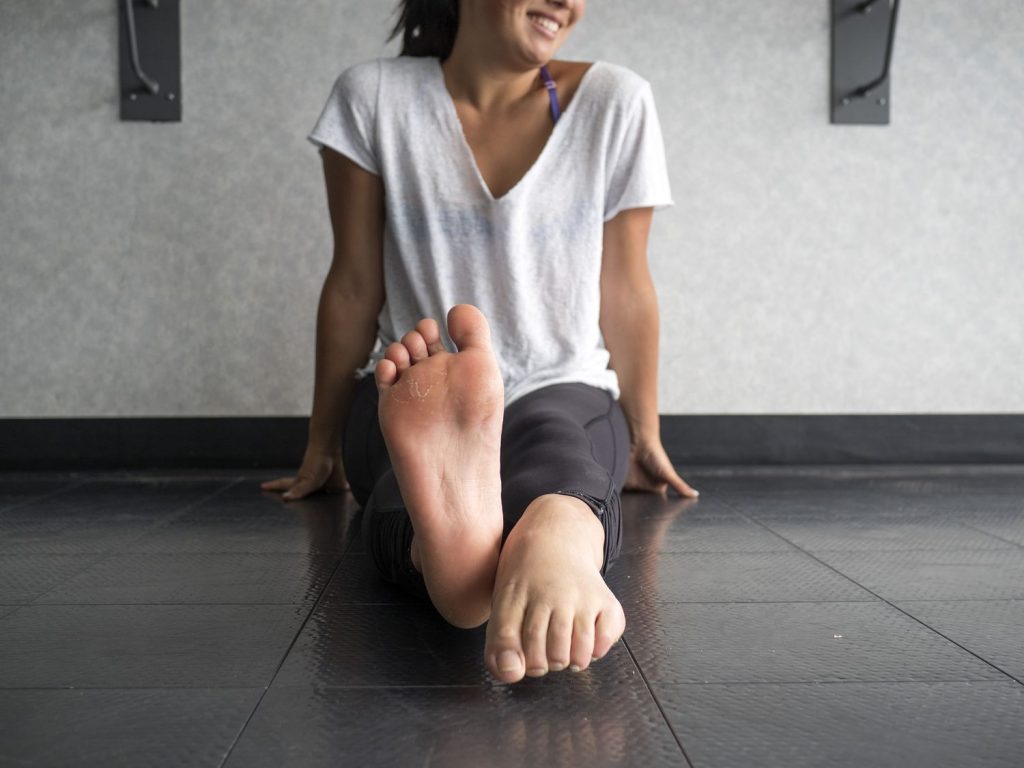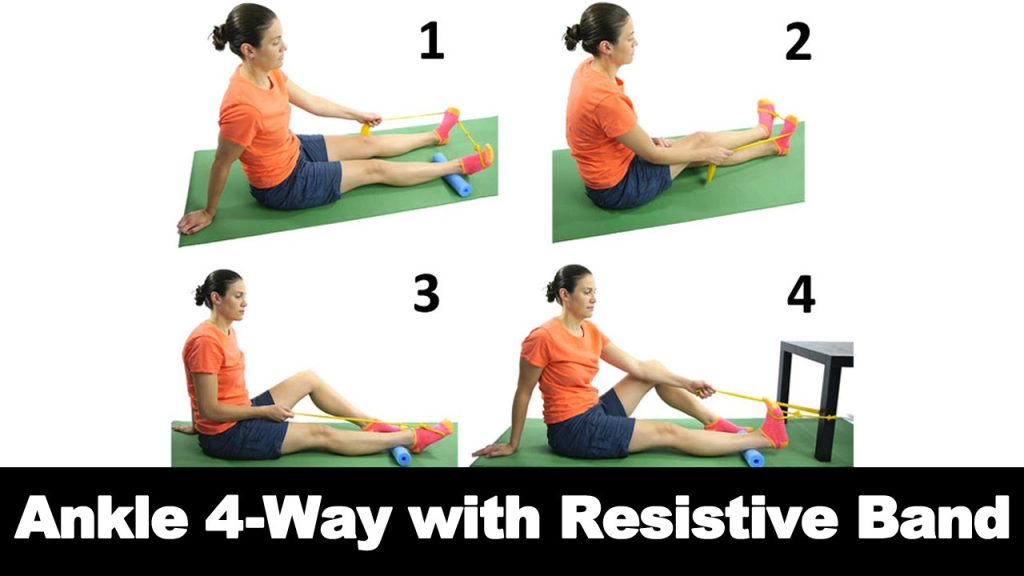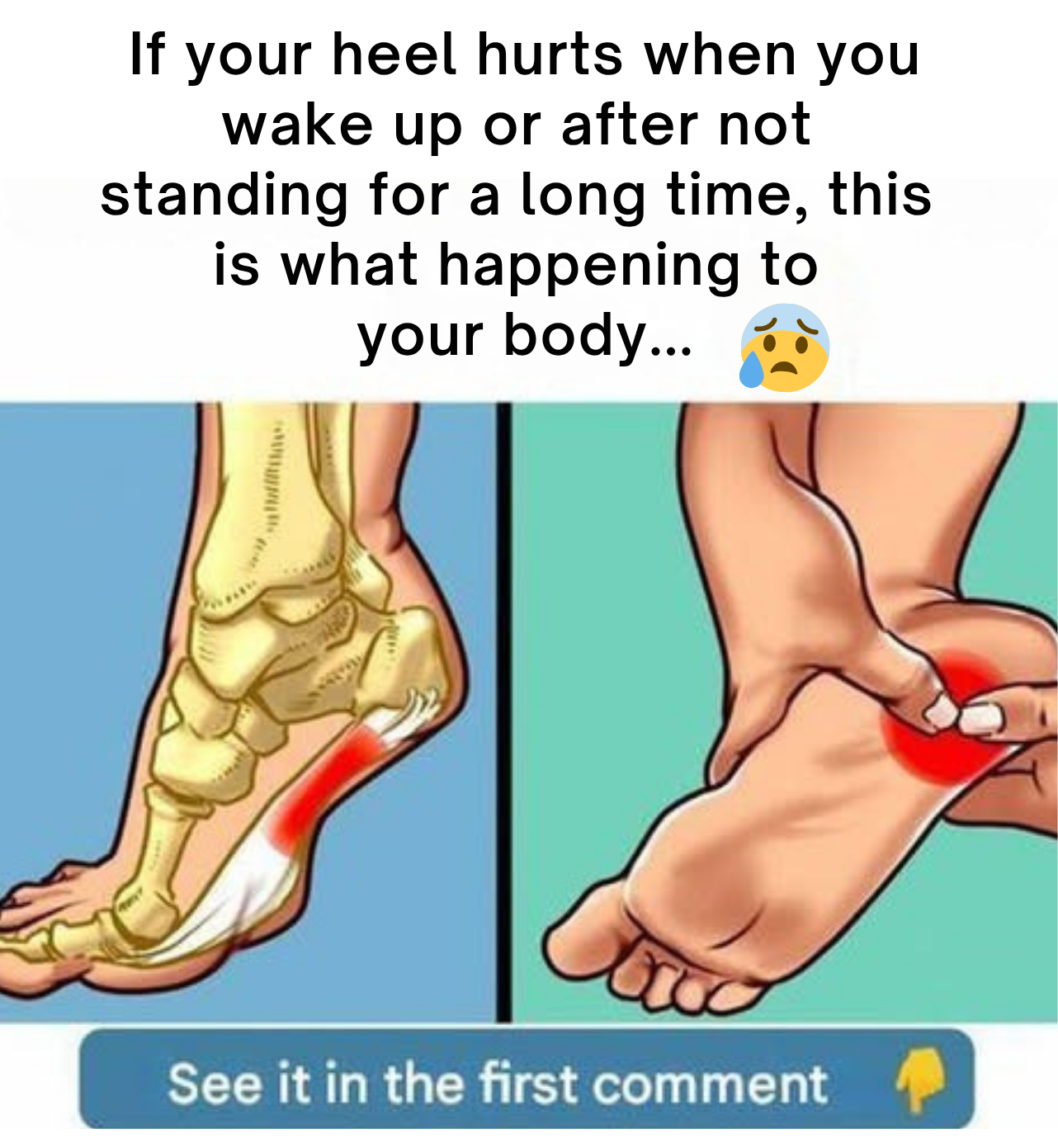5. Toe Raises (a.k.a. Toe Taps)

Strengthening the small foot muscles supports the arch and can help prevent stress on the plantar fascia. This simple movement can be done discreetly at your desk or during rest breaks.
- While seated with both feet flat, lift all your toes off the floor while keeping heels down.
- Pause briefly, then lower the toes.
- Perform 10–15 repetitions per set, aiming for 2–3 sets per day.
6. Foot Flex & Point Routine

Improving foot flexibility helps with overall mobility and lessens tissue tightness around the heel.
Try this:
- Sit with legs straight.
- Flex one foot, pulling toes toward your body; hold for 5 seconds.
- Then point the toes away and hold again for 5 seconds.
- Perform 10–15 repetitions per foot.
7. Ankle Mobility Circles

Improving ankle mobility helps ensure your foot and heel absorb impact efficiently and reduces plantar fascia strain. This low-impact exercise is great for circulation and range of motion.
- While seated or lying down, lift your leg slightly.
- Slowly rotate the ankle clockwise for 10 rotations, then switch to counterclockwise.
- Repeat on the other foot.
When to Talk to a Professional
If your symptoms don’t improve after several weeks of self-care, or if pain worsens, it’s wise to consult a podiatrist or physical therapist. Advanced treatments may include orthotics, night splints, or targeted therapy.
Preventative Tips to Keep Heel Pain Away

- Choose footwear with firm arch support and cushioning.
- Avoid walking barefoot on hard floors.
- Stretch calves and foot muscles before and after exercise.
- Maintain a healthy body weight to reduce pressure on your feet.
By adopting these exercises and habits consistently, you can significantly improve your foot comfort and reduce the risk of recurring plantar fasciitis.
5. Toe Raises (a.k.a. Toe Taps)

Strengthening the small foot muscles supports the arch and can help prevent stress on the plantar fascia. This simple movement can be done discreetly at your desk or during rest breaks.
- While seated with both feet flat, lift all your toes off the floor while keeping heels down.
- Pause briefly, then lower the toes.
- Perform 10–15 repetitions per set, aiming for 2–3 sets per day.
6. Foot Flex & Point Routine

Improving foot flexibility helps with overall mobility and lessens tissue tightness around the heel.
Try this:
- Sit with legs straight.
- Flex one foot, pulling toes toward your body; hold for 5 seconds.
- Then point the toes away and hold again for 5 seconds.
- Perform 10–15 repetitions per foot.
7. Ankle Mobility Circles

Improving ankle mobility helps ensure your foot and heel absorb impact efficiently and reduces plantar fascia strain. This low-impact exercise is great for circulation and range of motion.
- While seated or lying down, lift your leg slightly.
- Slowly rotate the ankle clockwise for 10 rotations, then switch to counterclockwise.
- Repeat on the other foot.
When to Talk to a Professional
If your symptoms don’t improve after several weeks of self-care, or if pain worsens, it’s wise to consult a podiatrist or physical therapist. Advanced treatments may include orthotics, night splints, or targeted therapy.
Preventative Tips to Keep Heel Pain Away

- Choose footwear with firm arch support and cushioning.
- Avoid walking barefoot on hard floors.
- Stretch calves and foot muscles before and after exercise.
- Maintain a healthy body weight to reduce pressure on your feet.
By adopting these exercises and habits consistently, you can significantly improve your foot comfort and reduce the risk of recurring plantar fasciitis.

